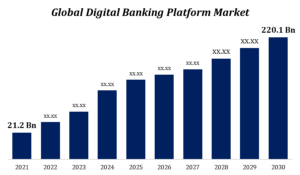Artificial Intelligence in Finance: Enhancing Risk Management and Fraud Detection
In the rapidly evolving world of finance, artificial intelligence (AI) has emerged as a powerful tool, revolutionizing various aspects of the industry. Among its many applications, AI’s role in enhancing risk management and fraud detection stands out as particularly transformative. Financial institutions are leveraging AI to navigate complex risk landscapes and combat the ever-growing threat of financial fraud. This blog explores how AI is reshaping risk management and fraud detection in finance, and why it is essential for the future of the industry.
The Growing Importance of AI in Finance
AI’s ability to analyze vast amounts of data quickly and accurately has made it a crucial asset in the finance sector. By automating tasks that were traditionally manual and time-consuming, AI not only increases efficiency but also uncovers patterns and insights that might be missed by human analysts. This capability is especially valuable in areas like risk management and fraud detection, where the stakes are high and the need for accuracy is paramount.
Enhancing Risk Management with AI
Risk management is at the core of financial decision-making. Financial institutions must constantly assess and mitigate various risks, from credit and market risk to operational and liquidity risk. Traditional risk management methods often rely on historical data and human judgment, which, while valuable, have limitations in predicting and responding to new and emerging risks.
AI, with its ability to process and analyze massive datasets in real-time, offers a significant enhancement to traditional risk management practices. Here’s how:
- Predictive Analytics: AI models can analyze historical data, market trends, and economic indicators to predict potential risks. These models can identify early warning signs of credit defaults, market volatility, or liquidity issues, enabling financial institutions to take proactive measures to mitigate these risks.
- Real-Time Monitoring: AI-powered systems can monitor transactions, market movements, and other financial activities in real-time. This continuous monitoring allows for the early detection of abnormal patterns or behaviors that may indicate emerging risks, giving institutions the ability to respond swiftly.
- Scenario Analysis and Stress Testing: AI can simulate various scenarios and stress tests, helping financial institutions understand the potential impact of different risk factors. This capability allows for better preparation and more informed decision-making, particularly in times of economic uncertainty.
- Improved Credit Scoring: AI algorithms can enhance credit scoring models by incorporating non-traditional data sources, such as social media activity or transaction history, to assess creditworthiness. This results in more accurate risk assessments, particularly for individuals or businesses with limited credit history.
AI in Fraud Detection: A New Era of Security
Fraud is a significant concern for financial institutions, with the potential to cause substantial financial losses and damage to reputation. Traditional fraud detection methods, often based on rule-based systems, struggle to keep up with the increasingly sophisticated techniques used by fraudsters. AI, however, offers a more dynamic and effective approach to combating fraud.
- Anomaly Detection: AI excels at identifying unusual patterns or behaviors that may indicate fraudulent activity. By analyzing vast amounts of transaction data, AI can detect anomalies that deviate from typical patterns, such as sudden large withdrawals or transactions in unusual locations. These anomalies can be flagged for further investigation, allowing institutions to catch fraudulent activity early.
- Machine Learning Models: AI-driven machine learning models continuously learn and adapt based on new data. This means that as fraudsters evolve their tactics, the AI system becomes more adept at detecting and preventing these new forms of fraud. This adaptability is crucial in staying ahead of sophisticated fraud schemes.
- Behavioral Analytics: AI can analyze user behavior, such as login times, transaction types, and device usage, to establish a baseline of normal behavior for each individual. Any deviation from this baseline can trigger alerts, helping to identify potential fraud in real-time.
- Automated Decision-Making: AI can automate the decision-making process in fraud detection, reducing the need for manual intervention. For instance, AI can automatically approve or decline transactions based on risk scores, speeding up the process while maintaining a high level of accuracy.
- Enhanced Customer Authentication: AI-powered biometrics, such as facial recognition and fingerprint scanning, are increasingly being used to enhance customer authentication. These technologies provide an additional layer of security, making it more difficult for fraudsters to gain unauthorized access to accounts.
The Future of AI in Risk Management and Fraud Detection
As AI technology continues to advance, its role in risk management and fraud detection will only become more critical. Financial institutions that embrace AI will be better equipped to navigate the complexities of modern finance, protect their assets, and maintain customer trust. However, the adoption of AI also comes with challenges, such as the need for robust data governance, ethical considerations, and ensuring transparency in AI decision-making processes.
Conclusion
Artificial intelligence is revolutionizing risk management and fraud detection in the finance industry. By leveraging AI’s capabilities, financial institutions can enhance their ability to predict, monitor, and respond to risks, while also staying ahead of increasingly sophisticated fraud tactics. As AI continues to evolve, it will play an even more central role in shaping the future of finance, offering new opportunities for innovation, efficiency, and security.
































